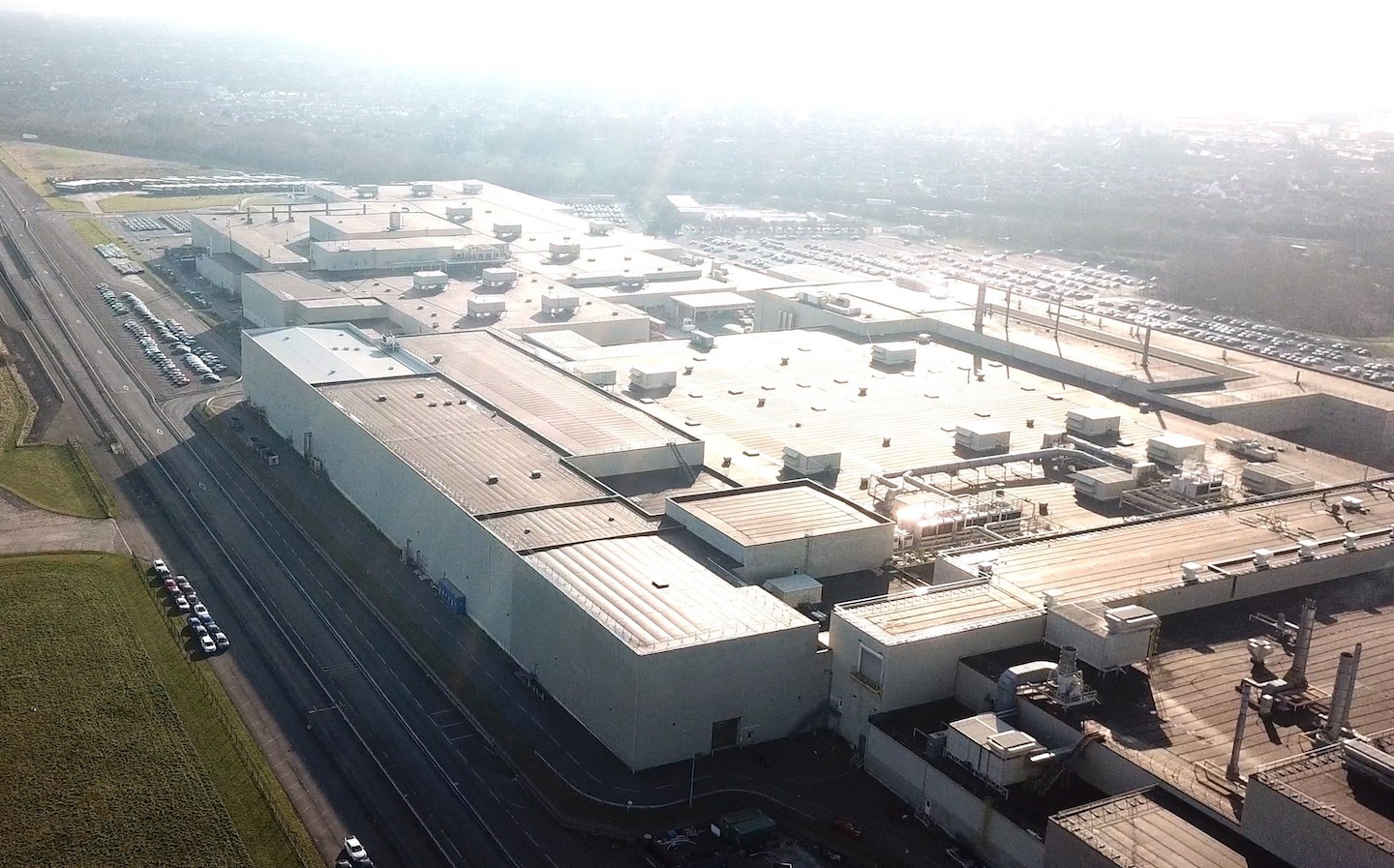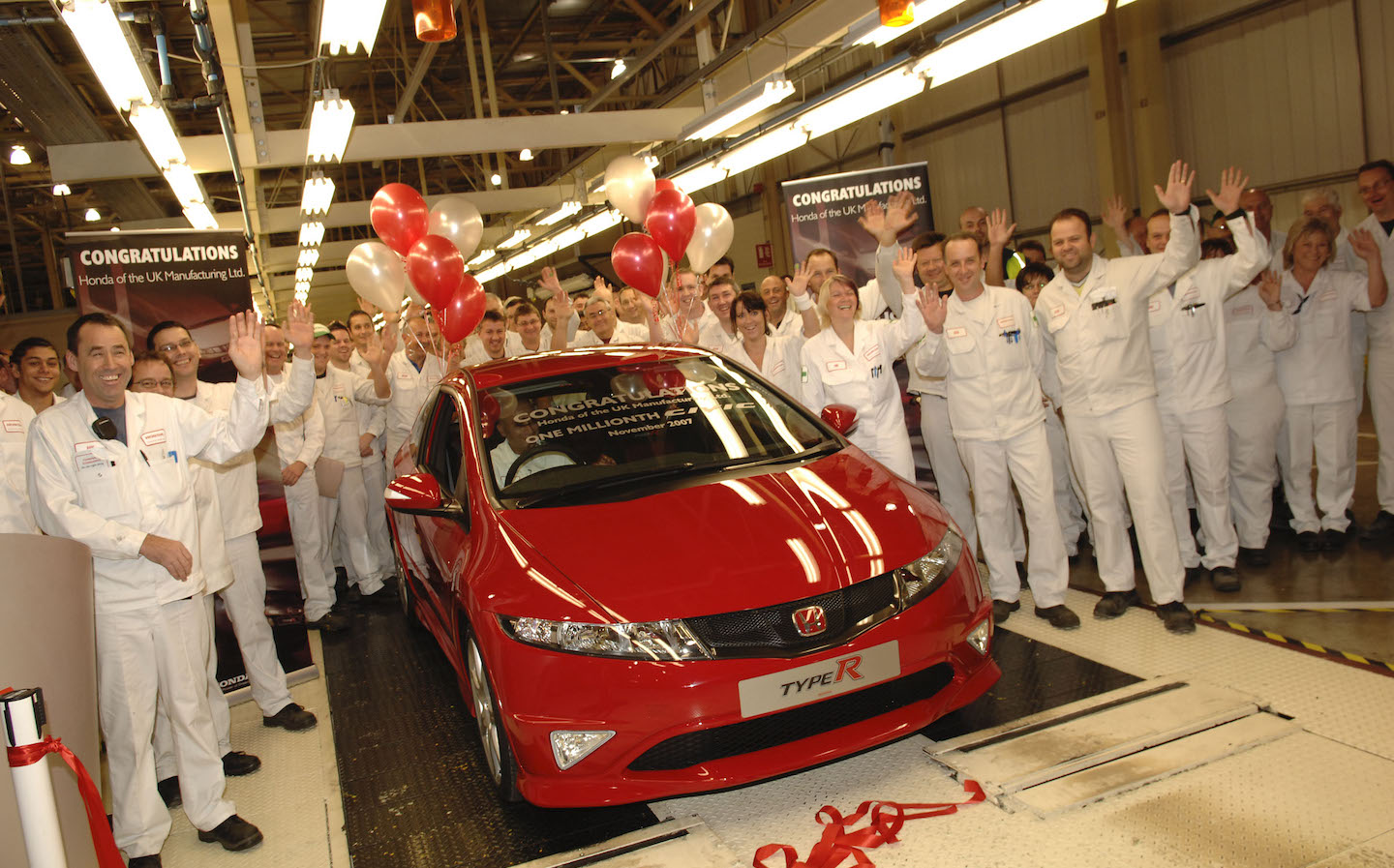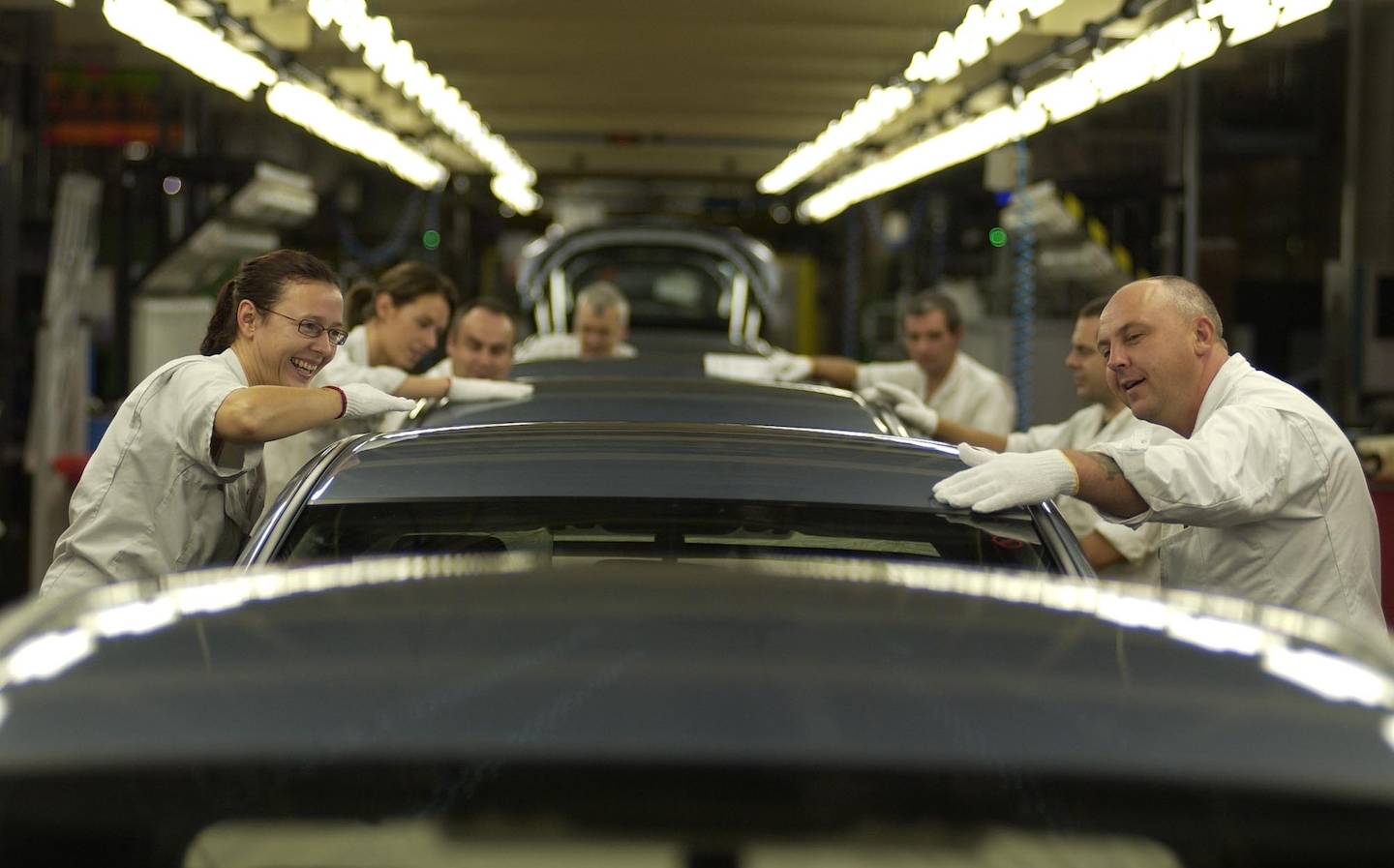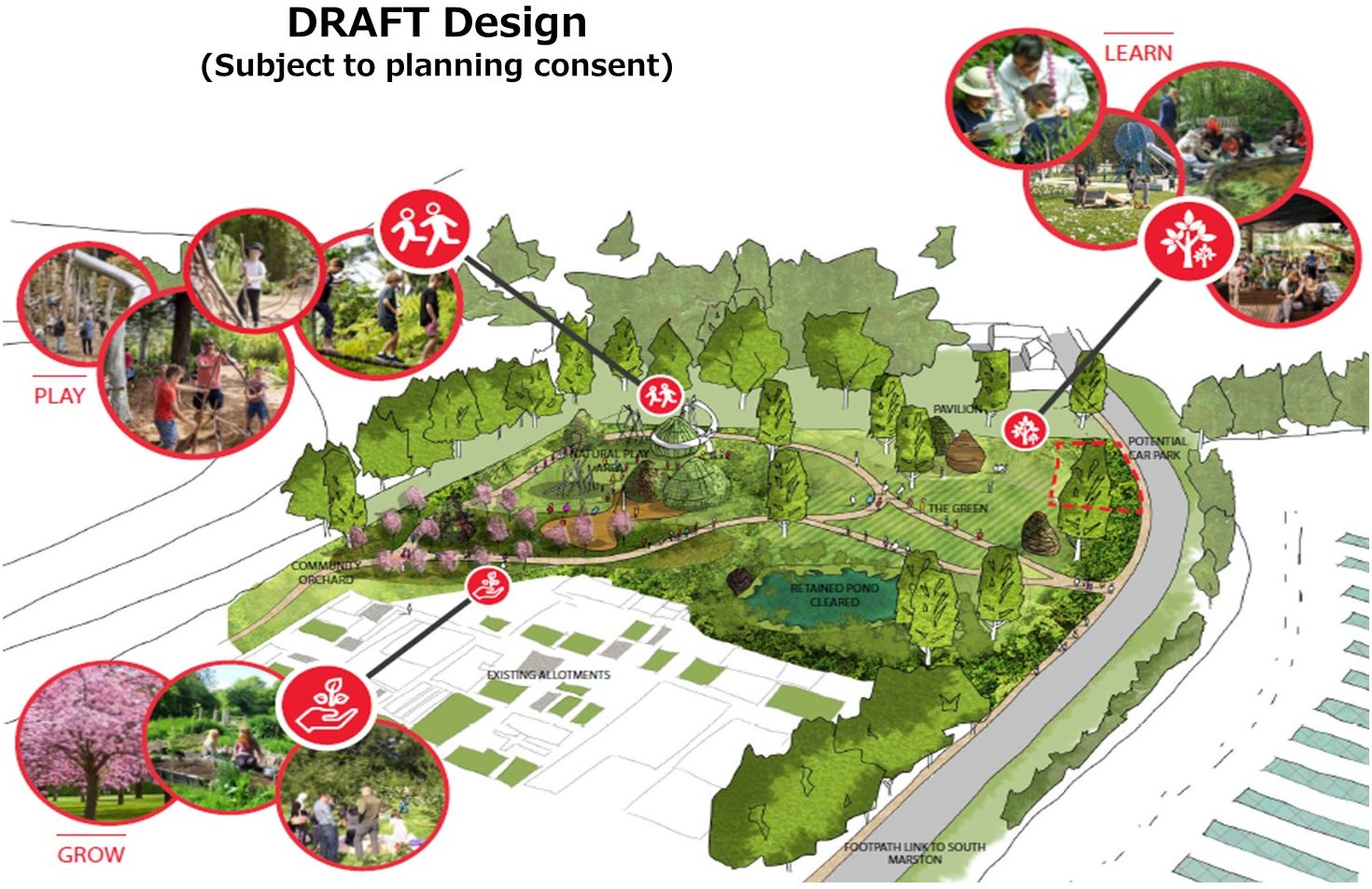Honda closes Swindon factory after 35 years of car production
Final vehicle has left the production line
HONDA UK has ended production at its Swindon car manufacturing facility, bringing to a close more than 35 years of vehicle production at the factory.
Although some 200 of the 3,500 employees at the plant will be kept on in the short term, to supervise the wind-down, Honda’s decision to close the factory means significant job losses for the Swindon area, with as many as 10,000 jobs in the supply chain thought to be affected.
Jason Smith, director at Honda of the UK Manufacturing, said: “Today is a sad day as we bring production operations to a close, but I’m confident our associates share my pride in everything we have achieved during our time in Swindon.
“I am incredibly moved by the dignity and pride displayed by our associates throughout the last two years. I’d like to thank them all for their continued hard work and dedication in what has been an incredibly emotional time for us all.”
A significant part of UK vehicle manufacturing
The closure brings down the curtain on three-and-a-half decades of significant car manufacturing in the UK. Honda first started work on its plant in Swindon in 1985, just a year after rival Nissan opened up its factory in Sunderland and four years before Toyota started its production line in Burnaston, in Derbyshire.
The Swindon plant was part of an influx of Japanese car manufacturers that came to the UK’s shores in the 1980s, keen to snap up skilled staff who were being laid off by the disintegration of home-grown UK car manufacturers such as British Leyland. The Japanese car makers were looking to use the UK as a launchpad for European sales.

The site was previously an aircraft factory, as had been so many British-based car factories, producing aeroplanes for Short Brothers and Vickers-Supermarine, among others. Honda’s first car to be built in Swindon, once the factory and adjacent engine plant had been fully commissioned, was the Accord saloon, which started production in 1992.
By 1994, the Civic hatchback — Honda’s best-selling model ever, racking up more than 27 million sales since its introduction in 1972 — had been added to the Swindon production roster, and it would be a mainstay of the factory from then until today.

By 2000, Swindon was also building the CR-V SUV, another huge global success for Honda, and a car which Honda reckons (depending upon which metrics you use) is the best-selling SUV in the world.
In the same year, Swindon started exporting UK-built cars to the Japanese domestic market, a move which made for quite the feather in Honda’s British hat.

Why Honda closed its Swindon factory
But while the compact Jazz model was also added to Swindon’s production roster, by 2009 things were starting to look a little shaky for Honda in the UK. The global recession had wreaked havoc on the industry, and the rapid switch to electrified cars (including pure-electric, plug-in hybrid, full hybrid and mild hybrid) meant the factory would need to be upgraded to remain relevant.
Although Swindon was announced as the global production hub for the Civic in 2015, by 2019 Honda had made the decision to bring vehicle production at its Swindon plant to a close. In the official statement, it cited “unprecedented changes in the global automotive industry”.
The company did not mention Brexit and the introduction of possible EU-UK trading tariffs, which were considered a possibility at the time (a last-minute zero tariff agreement between the blocs was penned in December 2020), nor the chance of increased friction at the borders. A spokesperson told Driving.co.uk that retooling the Swindon plant to accommodate electric cars would make less business sense than updating its plants aimed at the Asian and American markets, which produce vehicles in much greater numbers.
Honda’s legacy in Swindon
In the final months of production, Honda introduced “a sitewide visual campaign” thanking employees and highlighting their achievements and created displays of previous models built at the Swindon-plant. The company also re-instated the playing of ‘Rivers of Babylon’ at the start of each shift, which was an original feature of the plant.
In an official statement today, Honda said it wanted to “leave a positive legacy in the local community”, with hopes to redevelop an area of the site not included in the sale into a 1.3-acre ‘Honda Heritage Garden’, if planning permission is approved.

The garden would be open to the local community, with play area and spaces for schools and local groups to learn about nature, and include two Honda memorial trees, relocated from the main site, to remember staff who passed away while working at the plant.
Honda said it has also donated Science, Technology, Engineering and Maths (STEM) subject learning kits and a number of pre-production vehicles to local schools and colleges “to help inspire future generations of engineers in a bid to maintain Swindon’s engineering heritage.”
The Swindon site has been sold to Panattoni, a US-based property and warehousing company. The cars that Honda once built there will now be made in Japan, the US, and China.
Honda of the UK Manufacturing historical timeline

- 1985 Honda of the UK Manufacturing is established
- 1986 Honda of the UK Manufacturing begins operations, conducting pre-delivery Inspection on Honda models imported into the UK
- 1989 Engine Plant is opened and begins production
- 1991 The construction of Car Plant 1 begins
- 1992 Car Plant 1 opens and production of the Honda Accord begins
- 1994 Production of the Honda Civic begins
- 2000 Production of the Honda CR-V begins
- 2001 Car Plant 2 opens and production capacity increases to 250,000 cars per year
- 2001 Production of the Civic Type R begins
- 2002 Honda of the UK Manufacturing exports cars to North America for the first time
- 2003 Honda of the UK Manufacturing celebrates the production of its 1 millionth car
- 2008 Honda of the UK Manufacturing celebrates the production of its 2 millionth car
- 2014 The UK’s first public access hydrogen filling station opens at Honda of the UK Manufacturing’s site
- 2015 Honda of the UK Manufacturing announced as the global production hub for the tenth generation Civic hatchback
- 2016 Honda of the UK Manufacturing celebrates its 30th anniversary with a family fun day for associates and their families
- 2016 Honda of the UK Manufacturing hosts the launch of the tenth generation Civic hatchback
- 2018 Honda CR-V production concludes after 18 years
- 2019 Honda Motor announces its global restructuring which includes the closure of Honda of the UK Manufacturing
- 2021 March – Honda of the UK Manufacturing confirms new owner, Panattoni, for the Swindon site
- 2021 July – Honda of the UK Manufacturing ends production
Tweet to @ST_Driving Follow @ST_Driving
- After reading about production finishing at Honda’s Swindon plant, you might might be interested in reading about how the global semiconductor chip shortage is affecting car production
- Find our why a visit to Luton by Tesla CEO Elon Musk has intensified rumours of a UK gigafactory
- Nissan confirms £1bn electric car battery gigafactory for UK





